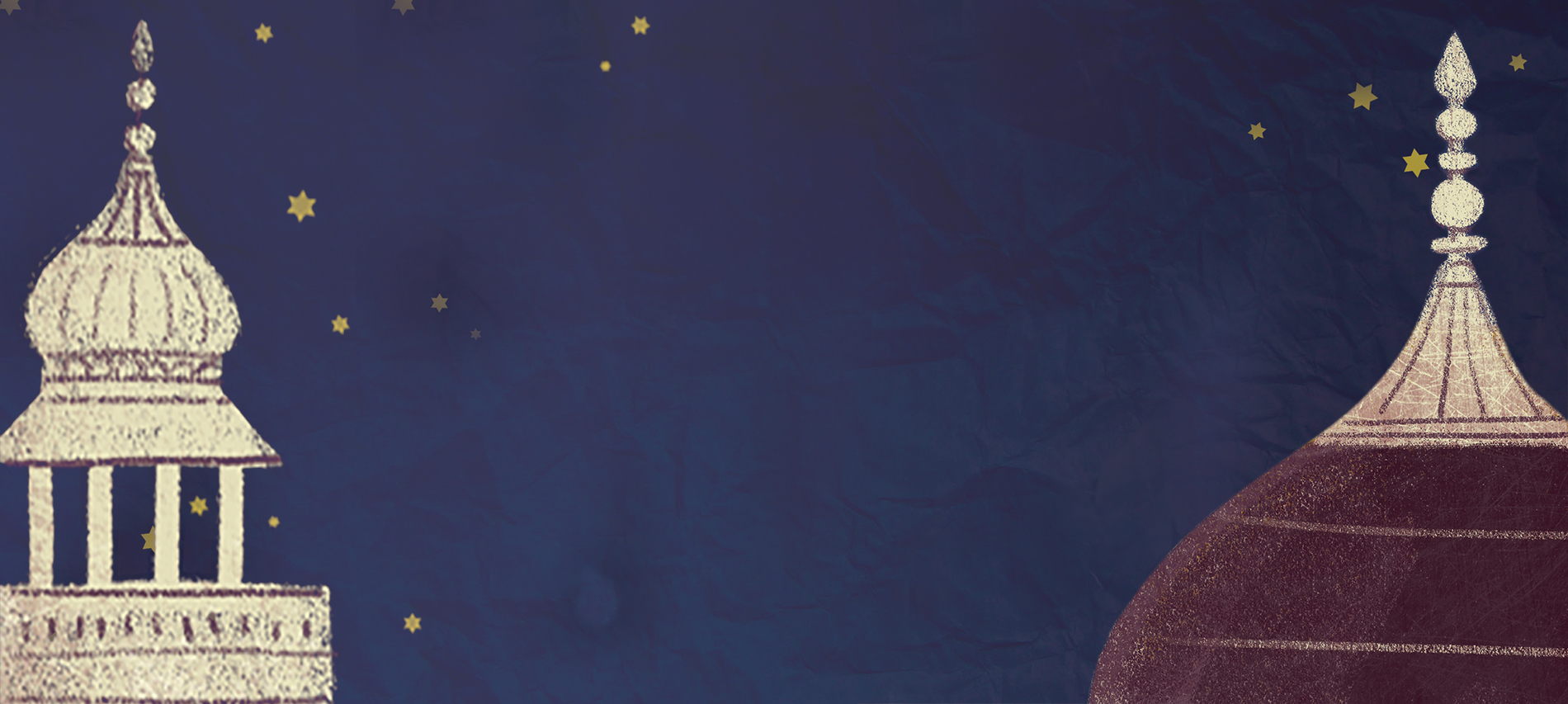For 230 years, America’s engagement with India, Afghanistan and Pakistan has been characterized by short-term thinking and unintended consequences. Beginning with American traders in India in the eighteenth century, the region has become a locus for American efforts-secular and religious-to remake the world in its image. Even as South Asia has undergone tumultuous and tremendous changes from colonialism to the world wars, the Cold War and globalization, the United States has been a crucial player in regional affairs.
In the definitive history of the US involvement in South Asia, The Most Dangerous Place by Srinath Raghavan presents a gripping account of America’s political and strategic, economic and cultural presence in the region.
Of the many interesting incidents and lesser known anecdotes in the book, one interesting narrative is Mark Twain’s visit to Bombay. Here is an excerpt from it.
————————————————————————————————————————————————–
On a sunny morning in January 1896, the visiting American— decked out in a white suit and straw hat—took a stroll on the outskirts of Bombay. On seeing a row of Indian washermen sweating it out, he asked his guide, ‘Are they breaking those stones with clothes?’ Samuel Langhorne Clemens had kept his sense of humour despite the fact that he had practically been forced to travel to India. A failed venture with a typesetting machine and the bankruptcy of his publishing firm had left Mark Twain ensnared in a web of debt: of over $1,00,000. To shake this off, the fiftyyear- old writer had embarked on a year-long lecture trip covering a hundred cities in Australia and New Zealand, South Africa and the British Isles, Ceylon and India.
In Bombay, Twain’s first appearance was in the Novelty Theatre before an overflowing audience worshipping ‘at the shrine of the world’s great humourist when he made his debut before his first Indian audience’. Twain spoke of, among other things, how there were 352 different kinds of sins, so that ‘the industrious persons could commit them all in one year and be inoculated against all future sins’. He told stories, some apocryphal, about George Washington and other great Americans, and also read a chapter from Tom Sawyer. Twain lunched with the Governor in his official residence and met Jamsetji Tata over dinner.
Like many well-informed Americans of his generation, Mark
Twain had thought of India as a land of fantasy: ‘an imaginary
land—a fairy land, dreamland, a land made of poetry and moonlight
for the Arabian Nights to do their gorgeous miracles in’. Ahead of his trip, he had written jocularly to Kipling, ‘I shall come riding my ayah with his tusks adorned with silver bells and ribbons and escorted by a troop of native howdahs richly clad and mounted upon a herd of wild buffalos; and you must be on hand with a few bottles of ghee, for I shall be thirsty.’3 After spending two months in the country and visiting over sixteen cities and towns, Twain concluded that India was the most interesting country on the planet. But his view of India was a tad more realistic: ‘This is indeed India—the land of dreams and romance, of fabulous wealth and fabulous poverty, of splendor and rags, of palaces and hovels, of tigers and elephants, the cobra and the jungle . . . the one land that all men desire to see, and having seen once, by even a glimpse, would not give that glimpse for the shows of all the rest of the globe combined.’
Twain was a curious and sympathetic traveller. The people, he wrote, were ‘pleasant and accommodating’. ‘They are kindly people . . . The face and bearing that indicate a surly spirit and a bad heart seemed rare among Indians,’ he added. The sight of an Indian servant in his hotel being needlessly struck by a European manager reminded him of his childhood in the American South and the stain of slavery on his own country. The ‘thatched group of native houses’ along the Hooghly River took him back to ‘the negro quarters, familiar to me from nearly forty years ago—and so for six hours this has been the sugar coast of the Mississippi’.5 Even Indian religion and spirituality, of which he had had no high opinion, Twain encountered with an open mind. On the massive Hindu religious festival in Allahabad, he wrote, ‘It is wonderful, the power of a faith like that.’ Meeting an Indian saint in Benares, Twain gave him an autographed copy of Huckleberry Finn and noted his admiration for men who ‘went into the solitudes to live in a hut and study the sacred writings and meditate on virtue and holiness and seek to attain them’. Twain had heard of the storied tradition of ‘thuggee’ or ritual strangling as a boy in America and wrote at inordinate length about it in his account of the passage through India. Nevertheless, he also observed, ‘We white people are merely modified Thugs; Thugs fretting under the restraints of a not very thick skin of civilization.’
All the same, Twain’s views of India were shaped by a sense of civilizational hierarchy. While India was ‘the cradle of human race, birth place of human speech’ and so forth, it was a civilization that had no notion of ‘progress’: ‘repeating and repeating and repeating, century after century, age after age, the barren meaningless process’. India had been the ‘first civilization’ and remained stuck there. If this was redolent of Britain’s ideological justification for the conquest of India, Twain more explicitly endorsed the political rationale of the Raj: ‘Where there are eighty nations and several hundred governments, fighting and quarrelling must be the common business of life; unity of purpose and policy are impossible.’ The beneficence of British rule flowed logically from these premises. ‘When one considers what India was under her Hindoo and Mohammedan rulers, and what she is now; when he remembers the miseries of her millions then and protections and humanities which they enjoy now, he must concede that the most fortunate thing that has ever befallen that empire was the establishment of British supremacy here.’

Tag: Pakistan
6 Important Milestones in U.S. and Pakistan’s Defence Relationship
After the enforcement of the Pressler amendment, U.S. aid and military sales to Pakistan were blocked, including a consignment of F-16 fighter aircraft. This move soured the defence relationship between U.S. and Pakistan. However, after the 9/11 attacks, U.S. for its fight against terror, had to seek Pakistan’s help, leading to the repeal of the Pressler Amendment.
Larry Pressler in Neighbours in Arms exposes the enormous power wielded by the military-industrial complex, which he terms ‘Octopus’, and how it controls significant aspects of the American presence in the Indian subcontinent. Here are 6 important milestones in United States and Pakistan’s relationship till the Pressler Amendment was invoked.
In an attempt to prevent the transfer of nuclear materials and technology, Senators Glenn and Symington had sponsored the Symington Amendment in 1976. A year later, the Glenn Amendment added more language to the Symington Amendment. These amendments were clearly directed at Pakistan and were intended to close any loophole that Pakistan, the ISI or the Octopus tried to find.

Presidents Carter and Reagan effectively ignored Pakistan’s nuclear programme and began to turn the spigot back on for military aid to flow to Pakistan.

Almost immediately, Congress also authorized a six-year $3.2-billion package of military and economic assistance to Pakistan, in order to make sure that they continued to cooperate with US regarding the Soviet invasion of Afghanistan.

The Pakistanis were further angered because they were forced to pay storage fees for the unused F-16s, housed in a boneyard in Arizona.

Pakistanis were particularly concerned with the blossoming military relations between India and U.S.

This move by the Bush administration came after 9/11 in order to forge new relations with Pakistan.

Tell us which aspect of the relationship of U.S. and Pakistan did astonish you the most.

The Making of Pressler Amendment— An Excerpt
As chairman of the US Senate’s Arms Control Subcommittee, Larry Pressler advocated the now-famous Pressler Amendment, enforced in 1990 when President George H.W. Bush could not certify that Pakistan was not developing a nuclear weapon. Larry Pressler was adjudged a hero in India and a ‘devil’ in Pakistan due to his stance on giving military aid to Pakistan. In his book ‘Neighbours in Arms’ Pressler provides a comprehensive account of how US foreign policy in the subcontinent was formed from 1974 till today and ends with recommendations of a new US-India alliance that could be a model for American allies in future.
Here’s an exclusive excerpt from the book.
In December 1981, a new section was added to the 1961 Foreign Assistance Act. It allowed the President to exempt Pakistan from the original Symington Amendment ‘if he determines that to do so is in the national interest of the United States’. (It is important to note that Pakistan was the only nation specifically exempted by name from these restrictions.) Almost immediately, Congress also authorized a six-year $3.2-billion package of military and economic assistance to Pakistan. I was opposed to this move, as I knew it would further encourage Pakistan to continue the development of their nuclear weapons programme.
Many of us in Congress knew that we could not trust President Zia to be honest with us about his nuclear ambitions. Everyone knew that Pakistan was continuing to acquire material and technology
to develop a bomb. Despite this fact, the Reagan administration wanted a new law that would give him a permanent waiver from the Glenn–Symington Amendment. At the time, guaranteeing Pakistan’s assistance in the fight against the Soviets in Afghanistan was more important than stopping Pakistan’s acquisition of nuclear weapons technology. The only way the administration could get Congress to go along with this permanent waiver was to include language in a new law that would punish Pakistan if it was determined that Pakistan actually possessed a nuclear weapon. This made the Glenn–Symington waiver more politically feasible to those of us in Congress who were working hard on non-proliferation issues. I was tapped to carry the ball and the Pressler Amendment was born.
My goal was to give this new amendment as much ‘teeth’ as possible. On 24 March 1984, the Senate Committee on Foreign Relations introduced an amendment offered up by California Democratic senator Alan Cranston and Senator Glenn. This first amendment stipulated that ‘no military equipment or technology shall be sold or transferred to Pakistan’ unless the President could
first certify that Pakistan did not possess nor was developing a nuclear explosive device, and that it was not acquiring products to make a nuclear explosive device. On 18 April 1984, the committee instead introduced a substitute offered by me, Maryland Republican senator Charles Mathias and Senator Charles Percy.
My former staff member, the late Dr Doug Miller, recalled that Senator Cranston’s face appeared ‘crestfallen’ when his amendment did not pass. In retrospect, while Cranston’s amendment and my
subsequent amendment were very similar, I feel his amendment would have cut off aid to Pakistan sooner. But the Republican Party was in control at the time. They wanted a Republican name on the
amendment.
The revised amendment offered by Senators Mathias, Percy and me instead tightly tied the continuation of aid and military sales to two presidential certification conditions: (1) that Pakistan did not possess a nuclear explosive device; and (2) that new aid ‘will reduce significantly the risk’ that Pakistan would possess such a device. This text was further revised with a provision offered by me, Senator Mathias and Minnesota Republican senator Rudy Boschwitz that the ‘proposed U.S. assistance [to Pakistan] will reduce significantly the risk of Pakistan possessing such a [nuclear] device’. It forced the President to affirm that increased aid was reducing the risk of Pakistan
getting nuclear weapons. I thought at the time that this was going to be impossible for any President to certify—based on Pakistan’s past behaviour and what President Reagan had assured me he would do.
The final text of Section 620E of the Foreign Assistance Act of 1961 read:
No assistance shall be furnished to Pakistan and no military equipment or technology shall be sold or transferred to Pakistan, pursuant to the authorities contained in this Act or any other Act,
unless the President shall have certified in writing to the Speaker of the House of Representatives and the chairman of the Committee on Foreign Relations of the Senate, during the fiscal year in which assistance is to be furnished or military equipment or technology is to be sold or transferred, that Pakistan does not possess a nuclear explosive device and that the proposed United States assistance program will reduce significantly the risk that Pakistan will possess a nuclear explosive device.
This text, which was signed into law by President Reagan on 8 August 1985, soon became known as the ‘Pressler Amendment’, even though I was not the only sponsor. I never referred to it as the Pressler Amendment. But when President George H.W. Bush later enforced it, the Pentagon wrote a series of worldwide memos and briefings explaining that Bush had to act in such a way towards Pakistan because of ‘Senator Pressler’s amendment’, mentioning me by name and making the amendment eponymous. It is important to understand that this legislation was passed at the request of and with the support of the Reagan administration. That is why I was so astounded when later Reagan never enforced it.
In summary, it made a law out of what had already been an official policy: our conventional arms assistance and financial aid to Pakistan would reduce the risk of nuclear proliferation. It used the power of the purse. It allowed us to pursue our communism-containment goals in the region, but it was also intended to force our leaders to proactively assert—on the record—that Pakistan was not making progress on its nuclear goals. Again, this policy seems counter-intuitive and, unfortunately, it had the opposite effect on Pakistan. And, with the help of the Octopus, Pakistan took our aid and flagrantly ignored the Pressler Amendment restrictions.

6 Things You Probably Didn’t Know About Pakistan
Meena Menon was The Hindu’s correspondent in Islamabad September 2013 to May 2014. During her time in the neighbouring country, despite the restrictions placed on her movements, Menon managed to write on a range of subjects covering swathes of life in Pakistan. Her book, Reporting Pakistan is a nuanced and wide-ranging account of a difficult yet exciting assignment which uncovers some of the hidden yet marvelous facets of the fabled “enemy”.
Here are six things you probably didn’t know about Pakistan:
Contrary to popular opinion, people in Pakistan are very welcoming of Indians

The salesman, according to Menon, was very solicitous and promised to record any film she wanted which he didn’t have on his list.
After her deployment, one of the first assignments undertaken by Meena Menon was interviewing a journalist named Ali Chishti. Chishti, a journalist with Friday Times, was forced to leave his home in Karachi.

Chishti was kidnapped and tormented for his writings on national and security issues along with the Muttahida Qaumi Movement (MQM).
Although majority of the population in Pakistan is Muslim, there are many other communities that live in the country, making it an extremely diverse society. During her time, Menon spoke to the members of the persecuted Ahmadi community. Constitutionally, the Ahmadis or Ahmadiyya or Qadianis had no right to be called Muslims. They could do nothing other Muslims could. They were heretics, according to the law, and could pray only in ‘a place of worship’ which could not be called a mosque.

In the same interview, X added, religious persecution started with the Ahmadis and when that was successful, with the government doing all it could to declare them non-Muslims, other communities were targeted, like the Hindus, Christians and Sikhs.
Rimsha Masih, a mentally challenged teenager, was accused of burning pages of Quran.

Though she was acquitted in November 2012 of all charges after it was found that the cleric who filed the case against her had planted evidence, the residents of her former neighbourhood were terrorized and forced to leave. That isolated tent camp in many ways, according to Menon spoke of hate and discrimination.
Mohammad Ali Asghar, a resident of Edinburgh, was accused of printing visiting cards in the name of Prophet Mohammad.

Menon however, found out that the real story was different. Asghar, who came to Rawalpindi in 2010, was shocked to find one of the two properties he owned there occupied by a notorious land grabber. He filed a complaint against him before leaving for the Haj pilgrimage, but it was Asghar who was arrested on his return. Predictably, all the evidence, including the letters, was handed over to the police by the complainant, who had many anti-corruption cases against him.
A gardener in Islamabad is the VIP of the city

Meena Menon, while staying in Islamabad, also observed that her neighbours obsessively cut and pruned their hedges to resemble flowers or animals—topiary.
Tell us which side of Pakistan astonished you the most?

Art in the Time of Orthodoxy
By Faiqa Mansab
There is a saying in Punjabi: When you make friends with elephants, you should build bigger doors. I’ve always felt that’s an apt way of describing what being an artist means. Art is the elephant; and an artist must make space for the subsequent battles that their art lets into their life. Such battles are small at first: about time spent doing ‘better, more useful things’; then the battles are angrier, ‘you want to end up dead?’ Rubbing the orthodox demagogues, the wrong way isn’t safe in my country and I chose to write stories that are taboo, dangerous even, in the current scenario.
For orthodoxy and extremism to succeed—and they are conjoined twins—a single identity is imperative. Plurality weakens the declaration of ‘us’ versus ‘them’ necessary to the narrative of dogma and so plurality is being systematically shunned. When religion is constructed as the defining feature of a society, then any difference in opinion is perceived as a threat. The bid for a religious identity must be singular, and it must be patriarchal—much like the concept of nationalism. Such an ideology is based on binaries: one must hate in order to love. Extremism is a necessary tool to the fulfillment of nationalistic jargon and jingoism, even though both are in response to global power dynamics and socio-economic oppression.
The battle between organized religion and spiritualism is as old as religion itself. Art for me is a kind of spiritual expression. Doctrine commands that life must be lived with rules. An artist, by nature, flouts rules. Spiritualism suits me better than orthodox tenets, even if spiritualism is currently out of favor within the society and State I call home. This is precisely because conventional religious dogma suits the State. Orthodoxy means rules, rules mean control and control means power.
It isn’t a West versus Islam condition at all. Even a largely Muslim majority country like Pakistan is facing ethnic and sectarian issues because difference is not tolerated in any form at any level. Look at what is happening at Sufi shrines, the very cradle of love and tolerance is being targeted to reinforce orthodoxy.
Extremism around the world is fed by the ‘us’ versus ‘them’ psyche, spreading like a contagion; and it is not just xenophobic, Islamophobic, anti-Semitic. Shia versus Sunni; liberal versus conservative, orthodox Muslim versus Sufi Muslim, neighbor versus neighbor—as if 1984’s Orwellian universe has become the new reality. These days one must have a single identity to be considered ‘true’ to one’s country, one’s race, one’s people. Not having a single identity makes one suspect. Plurality and hybridity are threats to be eliminated. Hence the witch hunt against seekers of truth—journalists and artists ongoing in Pakistan.
When society is divided between self-proclaimed self-righteous soldiers of God and ‘others’, then any deviation is open to interpretations of madness, of rebellion and sin. When ‘justice’ is meted out by mobs, and social media becomes a platform for shaming and blaming rather than a platform of freedom of speech, then extremism has already infected the socio-political fabric of society. It is already an unstable environment where conformist thinking has taken strong root and flowered into radicalism. These conditions bother me and in my stories, I’ve tried to depict this volatile and insecure place where law is open to interpretation by the highest bidder.
There is a lovely poem in Urdu by Dr. Khalid Javed Jan “Main Baghi Hoon”. It’s a beautiful poem about an artist, a person of principles, who is aware that he dares to do the right thing by speaking out against oppression. It’s one of my most favorite poems.
Man is a political animal. So is woman.
The worst off in this tussle, as in many other power struggles over the past centuries, are women. Their bodies are the site of struggle between conformist and liberal thinkers, and patriarchal wars are waged on their bodies. Should women be ‘allowed’ to wear the hijab? Should they be ‘allowed’ to wear burkinis? Should they be ‘allowed’ to wear bikinis? If perchance, it’s the body of an immigrant woman, then the right to speak about it, to dictate to it, to pass laws and judgment on it, increases manifold.
It began with Eve, who was not only an exile but also an immigrant. She came to a new world, leaving the familiar, her home—the Garden of Eden (‘Home’ is always the garden of Eden in memory and nostalgia) looking to build a new life with Adam on Earth. Immigration is ingrained in human psyche. It is a natural progression for some, a necessary act of survival for others.
There is another kind of immigration that the world finds problematic: the one between genders. Where do people of indeterminate gender, people who choose to change their sexual identity go? There is no country for queer people.
We can all agree that gender is a political declaration. My novel, This House of Clay and Water tells the stories of Bhanggi, Nida and Zoya, a hermaphrodite, a woman, and a child who are victims of their place, their society and culture, because of their genders and because they do not conform. Gender is still at the heart of power struggles in a lot of places in the world. And place, space, position is important in negotiating with power. Where one is from, and where one can go, are equally dynamic parameters of negotiation.
I often wonder, what art means. It is a roar against patriarchy for me, and it is a declaration of independence against conformity. Art reflects its times and the response of people to those times.

In Conversation with Faiqa Mansab
We recently spoke to the author of This House of Clay and Water, Faiqa Mansab. Her debut novel is set in Lahore and explores the themes of love, friendship and orthodoxy.
Below is our conversation with Faiqa, who is currently in Lahore:
Share your writing process behind The House of Clay & Water, how did you think of writing about the insidious power of orthodoxy in Pakistan?
I’ve come to believe that we write the stories that we are meant to; stories which only we can write. I come from a pluralistic and hybrid literary family tree. Punjabi Sufi poetry was always playing in the background at home. I grew up reading English literature, then graduated to American and European literatures, and all the while I was also reading Ghalib, Faiz, Mir, short story writers, novelists, women who wrote about the devastating Pakistan I lived in, yet I was so far removed away from it. Despite such a diverse education, I was never confused about my identity or my languages. I loved all three that were at my disposal and yearned for Persian and French.
I read whatever I could, except for comics. I’m afraid I’ve never appreciated comics. I read literary novels and also cross-genre novels like Du Maurier, Mary Stewart, Pat Conroy, Colleen McCollough and others who wrote beautifully but were still not considered ‘highbrow’. I wanted to write like all of them. I don’t think a writer makes a conscious decision to write about a topic or social issue.
This House of Clay and Water grew out of the first draft of another book that I had been writing prior to the MFA. It employed Magical Realism, sported a jinn, and a great deal of philosophy. After 60k words the story was still emerging and wasn’t very clear. It was called lyrical, beautiful and all that by my first readers, my class fellows, but I knew I had to let it go. I started the novel again, rooted in what is called ‘realism’ in literary terms. The female protagonist of the previous novel had stayed with me and moved premises into the new novel. She became stronger, her voice was so clear.
I’m very proud of my legacy, very rooted in this land, and my heritage. My writing stems from a place of deep love for this land, its customs and privileges, its tragedy and its sorrows. My memory goes back a long way; long before I was born, or my parents were born and this novel isn’t about orthodoxy waging wars on Pakistani turf, but orthodoxy waging war on spiritualism, on Sufism, on tolerance. It is hurtful. It is wrong. It isn’t us.
How did you come up with the different characters in your book, have you met such people in real life?
I never really know how to answer that question. If you mean, are they based on real people? Then no, they are not. If you mean that you will never see them in real life, then I’ve failed as a writer. They aren’t real but they had better be realistic. They are I think, or the biggest publishing house in the world wouldn’t have backed this book. (I love reminding everyone that Penguin has published my book).
Difference fascinates me. Peripheries and centers fascinate me. Power dynamics between genders and how social constructs mold people and their behaviors is frighteningly like living in a prison, like being conditioned and brain washed. When you really come down to it, we are all conditioned to behave in certain ways under given circumstances…like Pavlov’s dogs. There is very little agency in an average human life until and unless we actively go against the grain, at the risk of being ostracized, called mad or just hated.
I wanted to write about such people. Women who go against the grain are worse off than men even. They are intolerable. They are monsters that have to be killed to re-establish social order like in Sophoclean tragedy or Shakespearean tragedy, where the social sickness had to be rooted out, killed to purge the city state and bring peace. These aberrations are not tolerated.
Which brought me to those human beings the world considers aberrations, and ridicules, and humiliates: eunuchs, hermaphrodites, castrati’s. They were not treated this badly in the sub-continent until the British came along. The attitude of hate and humiliation towards hermaphrodites is a legacy of the British. In the traditional and historical culture of the sub-continent, hermaphrodites were treated with courtesy, even if they were not considered equal. But now we must do better for women and for transgenders.
Do you have any writing rituals?
Coffee. Nothing fancy, but hot, and at least two large mugs to start me off. I have a lovely little study, with a lilac ceiling, and a thick carpet of the same color and a small white mantle with my books on it. A writing table facing the wall which has my vision board from end to end, full of Van Gogh and Monet postcards, inspirational quotes and rules of writing from famous authors. I sit and I stare, drink my coffee and feel small and miserable. Then I drink another cup, and I feel better, less small, less insignificant, more ambitious. A few more sips, and I open my laptop. Its sleek and new, and has only my manuscripts. I begin by reading what I had written yesterday or day before. Sometimes I don’t see any mistakes and I’ll start typing happily. If I find mistakes, well, I start fixing them until I am tired. Then I get a new cup of coffee and start writing something new.
This happens only on good days. Sometimes coffee doesn’t work on feelings of smallness and insignificance. Those days I sit on my lilac armchair and read Proust. You know, one might as well go down in style.
How does the place affect your writing, in terms of setting as well as inspiration?
Place is important. Location is political. Location is the heart of the story. Sometimes it is the only story. For me that place is often Lahore. I will never understand this city. I’ve accepted that and that’s’ why I can write about it. It so complex and so Protean. I love writing about this city.
Any advice for aspiring writers?
Learn to edit your own work. Read it again and again till you’re sick of it and can see beyond your love for it and into the mechanics of sentences and paragraphs. Then get rid of everything extraneous.

6 Quotes from Nadeem Aslam’s Searing New Book that will Leave You in Awe
Against a background of violence and fear, two outsiders in Pakistan try to find an island of calm in which their love can grow. In his characteristically enchanting prose, Nadeem Aslam reflects Pakistan’s past and present in a single mirror—a story of corruption, resilience, and the hope that only love and the human spirit can offer.
Here are six quotes from his new novel – The Golden Legend.






Struck by the searing instances above?

9 Things You Didn’t Know About the Pakistani Army
The military is one of the vital organs of the state. However, in Pakistan, the military plays a far more deep-rooted role in the politics of the country, and dominates all other institutions.
Ayesha Siddiqa, in her extensively-researched book, Military Inc. aims to explain the role of personal economic stakes in commercial ventures as a driver of the armed forces’ political ambitions.
Pakistan’s military runs a huge commercial empire. Here are nine facts that will give you a glimpse of the military’s involvement in the various institutions of the country:









Find out more about the army’s involvement in Pakistan’s economy in Ayesha Siddiqa’s Military Inc.

5 Things You Didn’t Know About Mohammad Ali Jinnah
Mohammad Ali Jinnah is well known as a world leader who rose during the freedom struggle against British colonization. Personally, he was often described as stern or cold and singularly obsessed with his political ambitions, however , there are many unknown facets to him.
Sheela Reddy uncovers some of these in her new book, Mr and Mrs Jinnah:





Sheela Reddy in her exhaustive account, chronicles the unknown facets of the man known as Mohammad Ali Jinnah. Get your copy here.
7 Things About Nadeem Aslam that will Leave You Spellbound
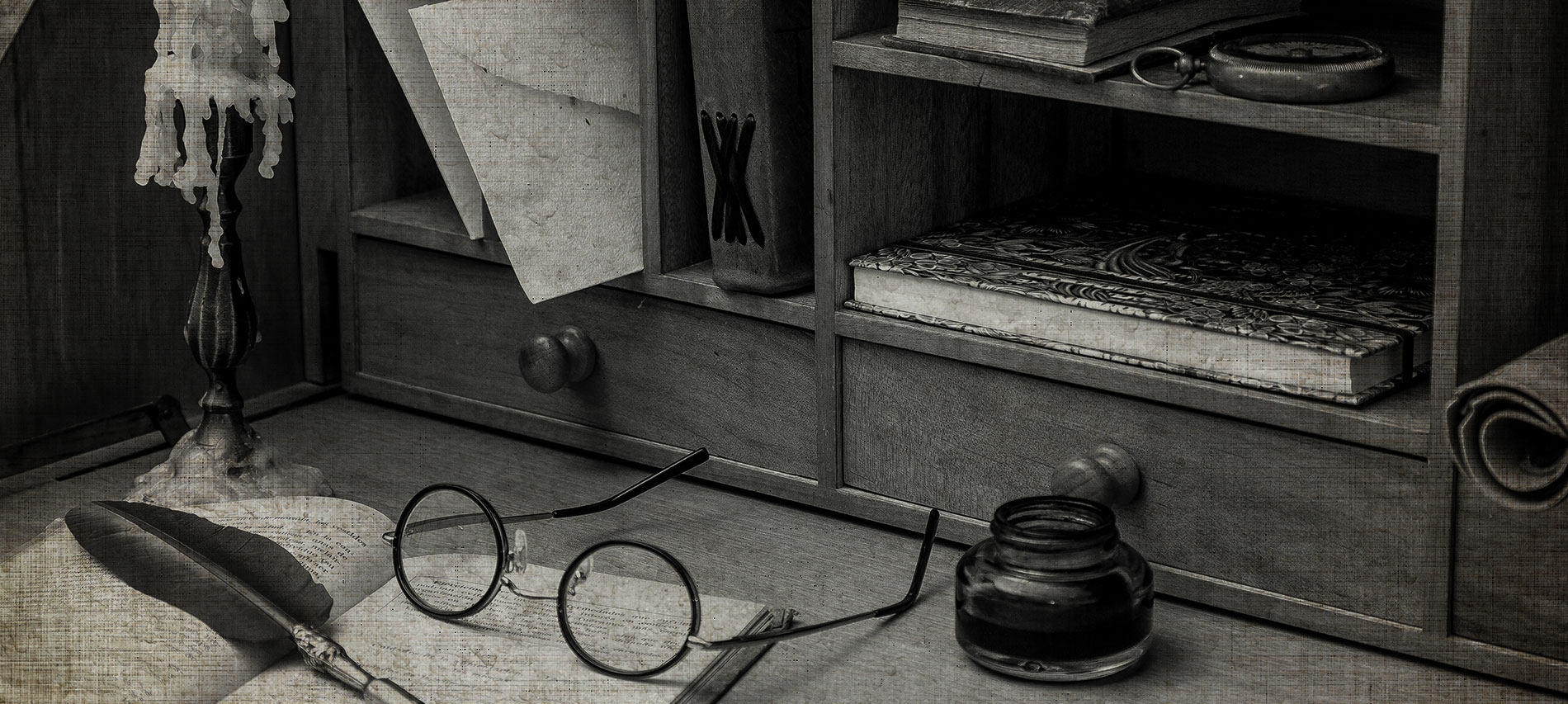
When a young Nadeem Aslam – sixteen years of age – fled from his native Pakistan and settled in England, he barely knew the English language. Back home, Urdu-medium schools had dotted the country and English education had been rare and for the affluent few.
In England, as a teenager, learning and writing in English became Nadeem Aslam’s burning desire – a language in which he would go on to produce highly influential works. As part of his self-imposed “crash-course” to learn English, he started by copying out entire novels by hand and studying the content! “That’s how I learned English, looking at the sentences,” Nadeem Aslam says.
Today, as one of the leading writers from the subcontinent who has made an indelible mark on the international stage, Nadeem Aslam has left behind striking footsteps to follow. Here are few of the fascinating things about him that are going to leave you captivated!
Educating himself and developing as a writer.

In the company of solitude.
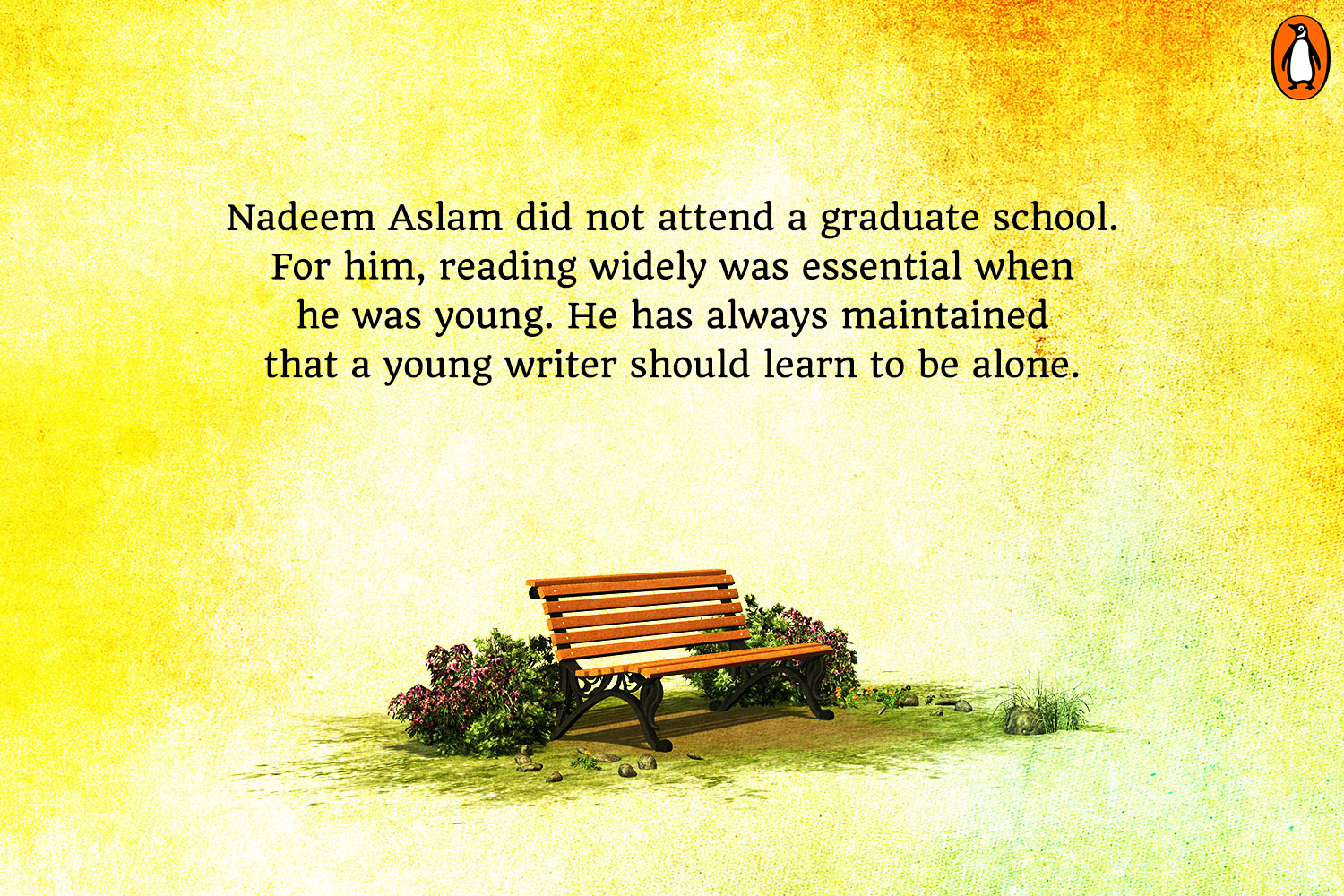
Words flowing from his mind into his hand, then down the pen, and onto the page – blood becoming ink!
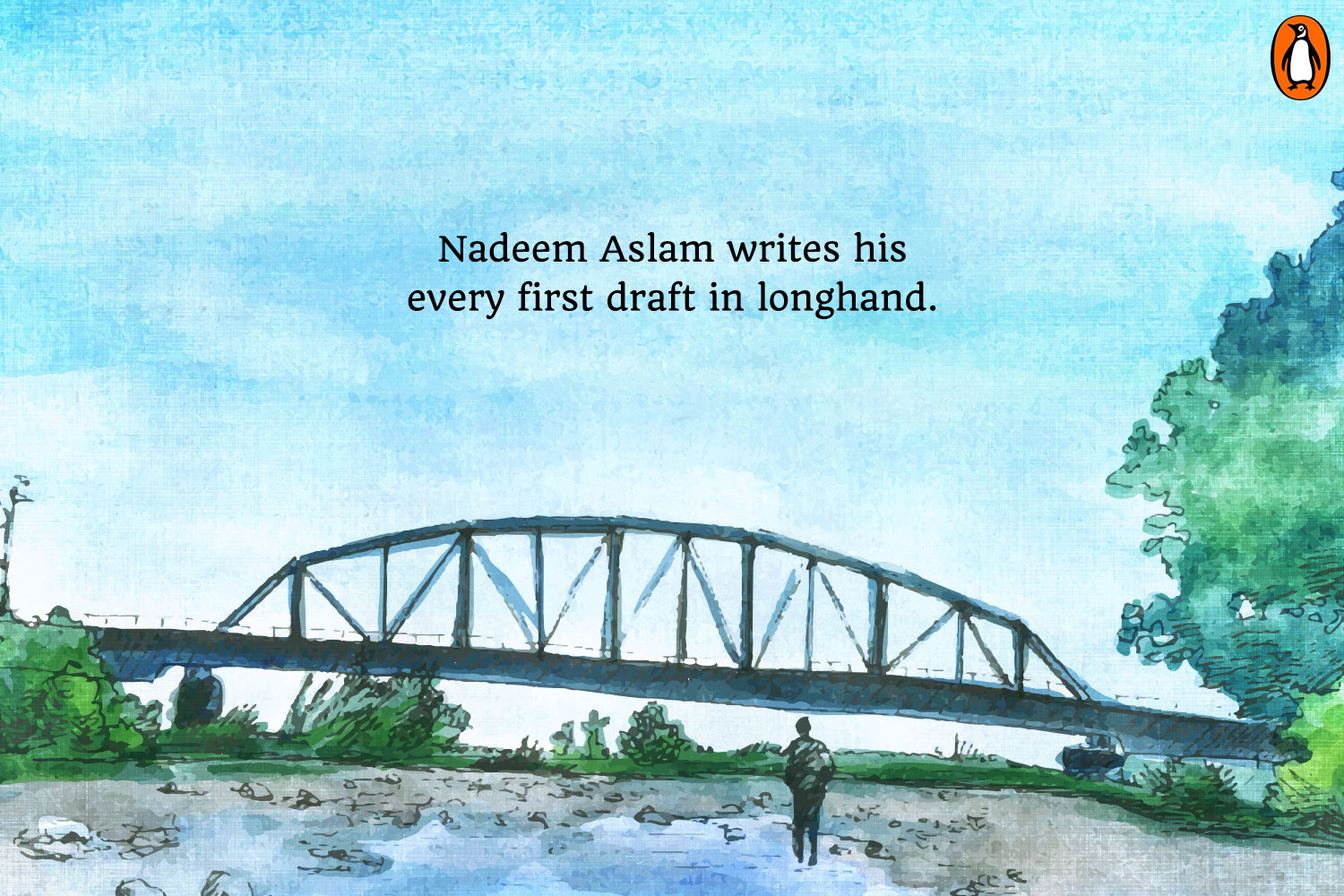
Breaking out!
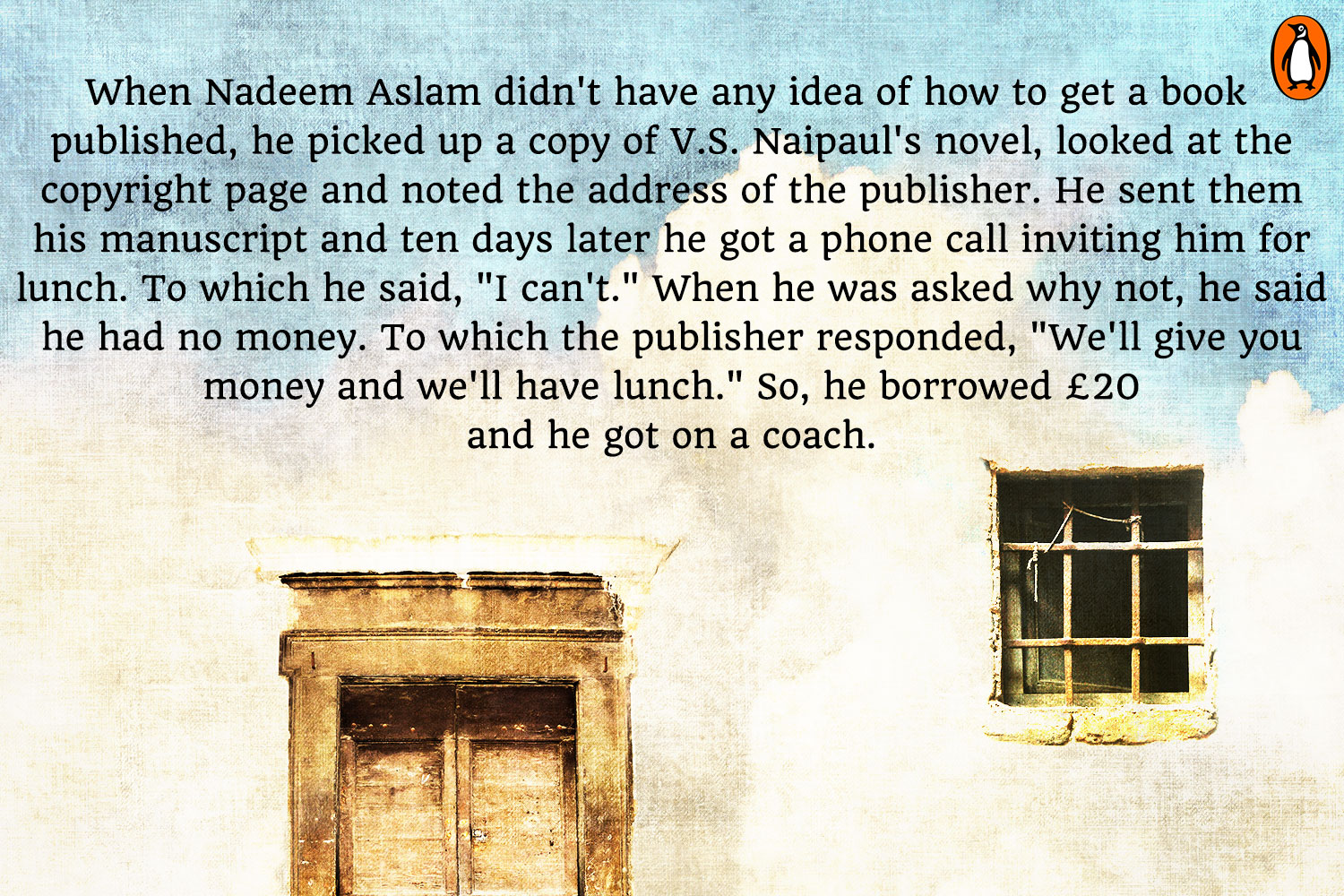
Suffering with pleasure.
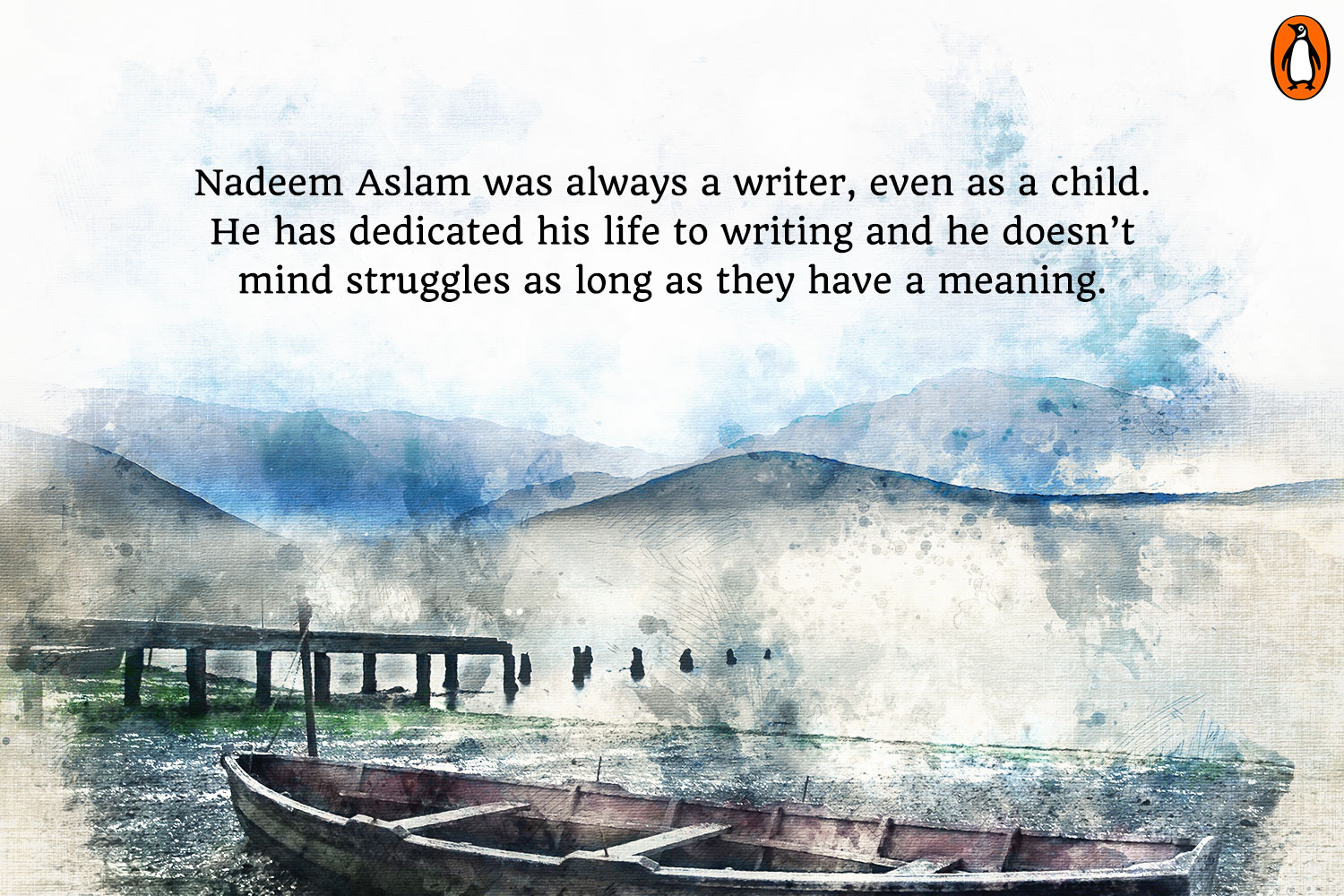
A writer builds his own world!
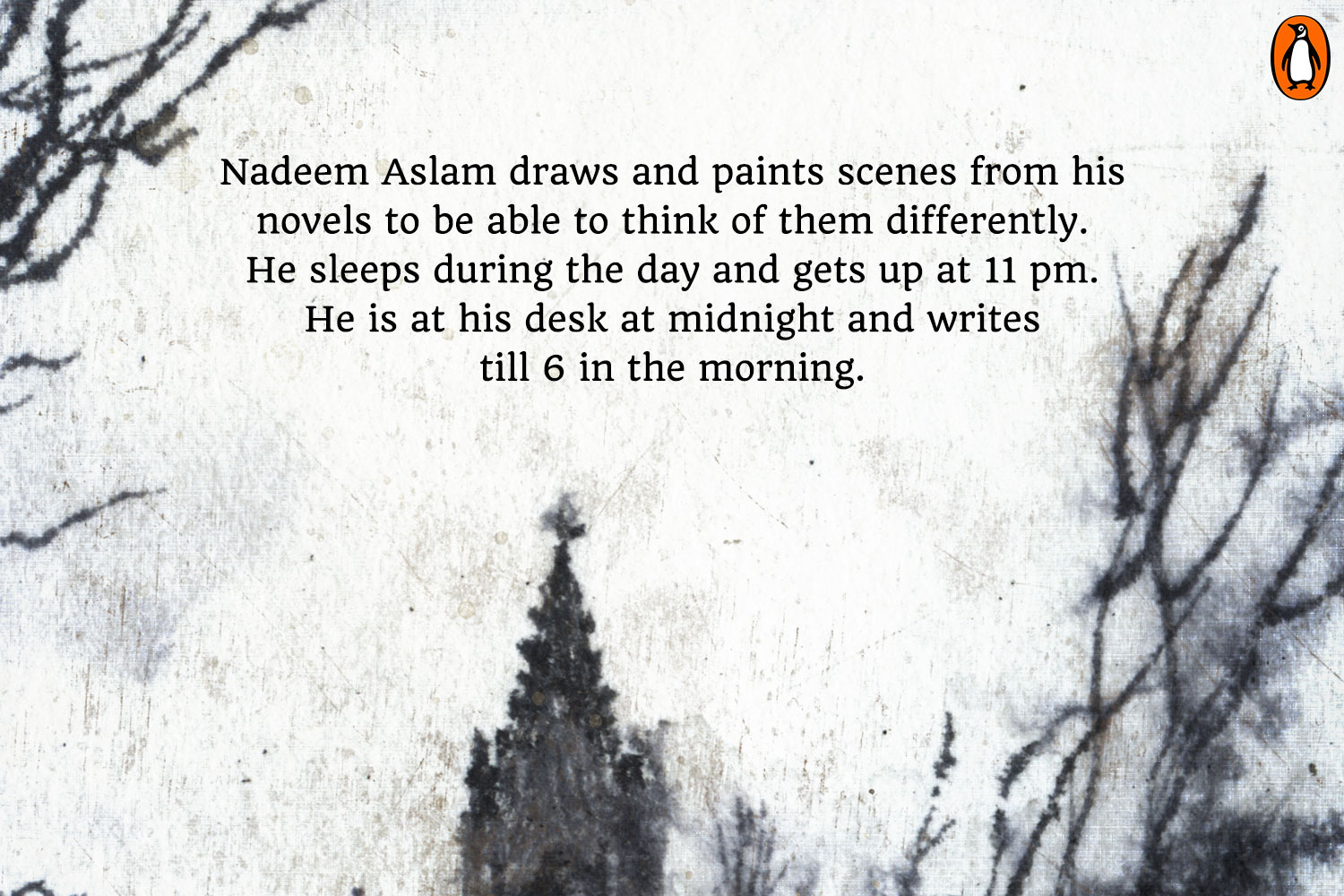
Excellence is a consequence of hard work and preparation, isn’t it?

*










